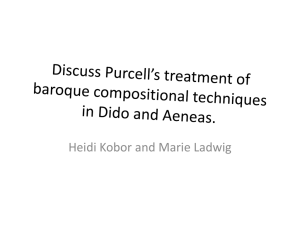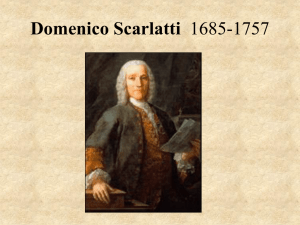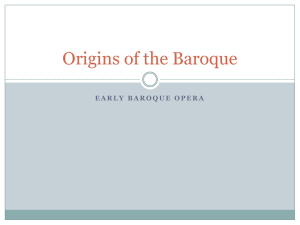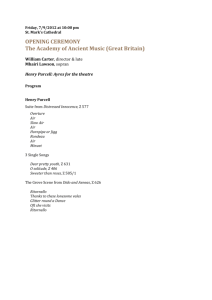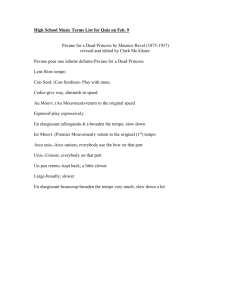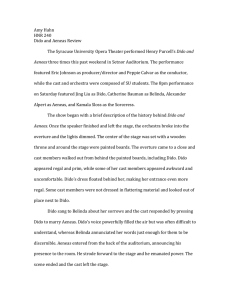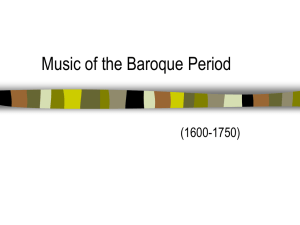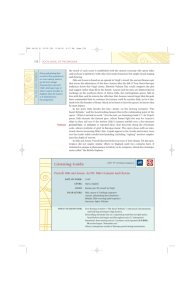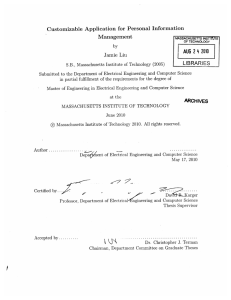Presentation1
advertisement
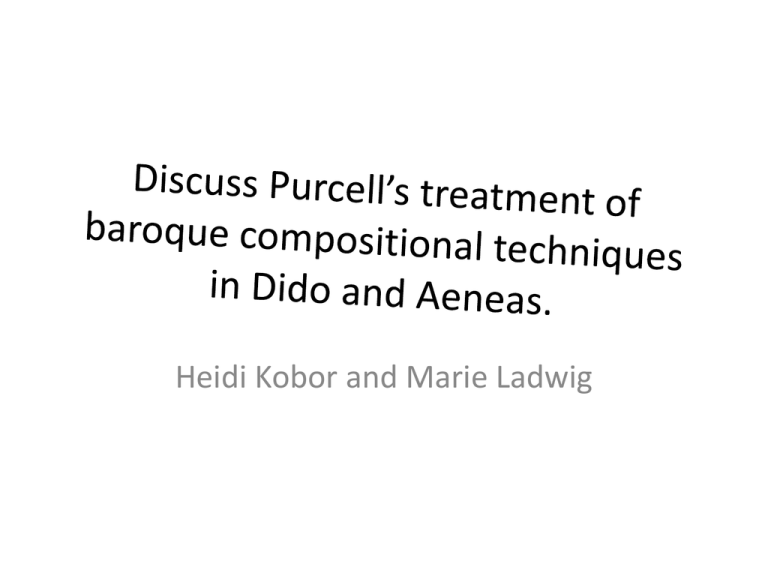
Heidi Kobor and Marie Ladwig Overview of Baroque • • • • • • Harmony Melody Texture Dynamics Form Opera Harmony • Quick harmonic pace • Regular pulse, continuous energetic harmonic motion (basso continuo) • Rich harmonies • Bold chromatic harmony • Rich dissonances • Great use of the minor keys Melody • • • • Continuous melodic line Obvious cadences Building on motivic and sequential repetition Compact pattern repeated in a selfperpetuating manner • No regular periodic structures • Melodic extensions • Irregular or dovetailed cadence points Texture • • • • • • Complex and subtle Counterpoint Homophonic Harpsichord Strings Woodwind Dynamics • • • • • Limited use of dynamic contrast Sudden contrast from f to p Terraced dynamics Excessive Ornamentation No tempo changes Form - Opera • Recitative – Recitativo secco and accompagnato • Aria – – – – Solo vocal operatic fom Accompanied by continuo and instruments Clear form (da capo) Reflective moment • Only proper and substantial opera from the Baroque era is Dido and Aeneas, 1689 • Lully – No flexibility in tempo and rhythm – High level detail – Overture Form - Dance • Dances flourish • Allemande, Courante, Sarabande, Gigue (English), Minuet, Gavotte, Bourree, Polonaise • Own tempo, meter and rhythmic characteristics DIDO AND AENEAS Harmony • Regular pulse, continuous energetic harmonic motion (basso continuo) – ground bass (see below) • Rich harmonies: e.g. page 179, rehearsal mark 39 • Chromaticism: see below • Dissonance: see page 177, bar 7 • Minor keys: C-minor, D minor, E minor, F minor, G minor vs. 3 major keys • Based on Dominant, Tonic, Subdominant: Page 176-177, bar 7-10 Melody • Continuous melodic line: “When I am laid…” • Obvious cadences: page 177, bar 11 • Building on motivic and sequential repetition: – “Remember me” – Page 156 • No regular periodic structures: Dido’s lament • Irregular or dovetailed cadence points – Page 176, bar 6 – Page 177, bar 17 Texture • • • • • • Complex and subtle: Ah Belinda Ritornello: Act II, Scene II page 138 Counterpoint: Page 102 Homophonic: Page 97 Polyphonic: Page 102 Instruments: – Harpsichord – Strings – Voices Dynamics • • • • • Limited use of dynamic contrast: Overture Sudden contrast from f to p: Pag 91, bar 40 Terraced dynamics: Page 84, bar 13-16 Excessive Ornamentation, Page 96, bar 17 No tempo changes Form: Opera • Recitative – Recitativo secco – Page – Recitativo accompagnato – Page 176 • Aria – – – – Dido’s lament Ah Belinda! Accompanied by continuo and strings Clear form, yet not always da capo • Da capo: “Fear no danger to ensue” • Not da capo, but AB: “Ah Belinda”; “Dido’s lament” – Reflective – Expressive • Overture • No flexibility in tempo and rhythm
